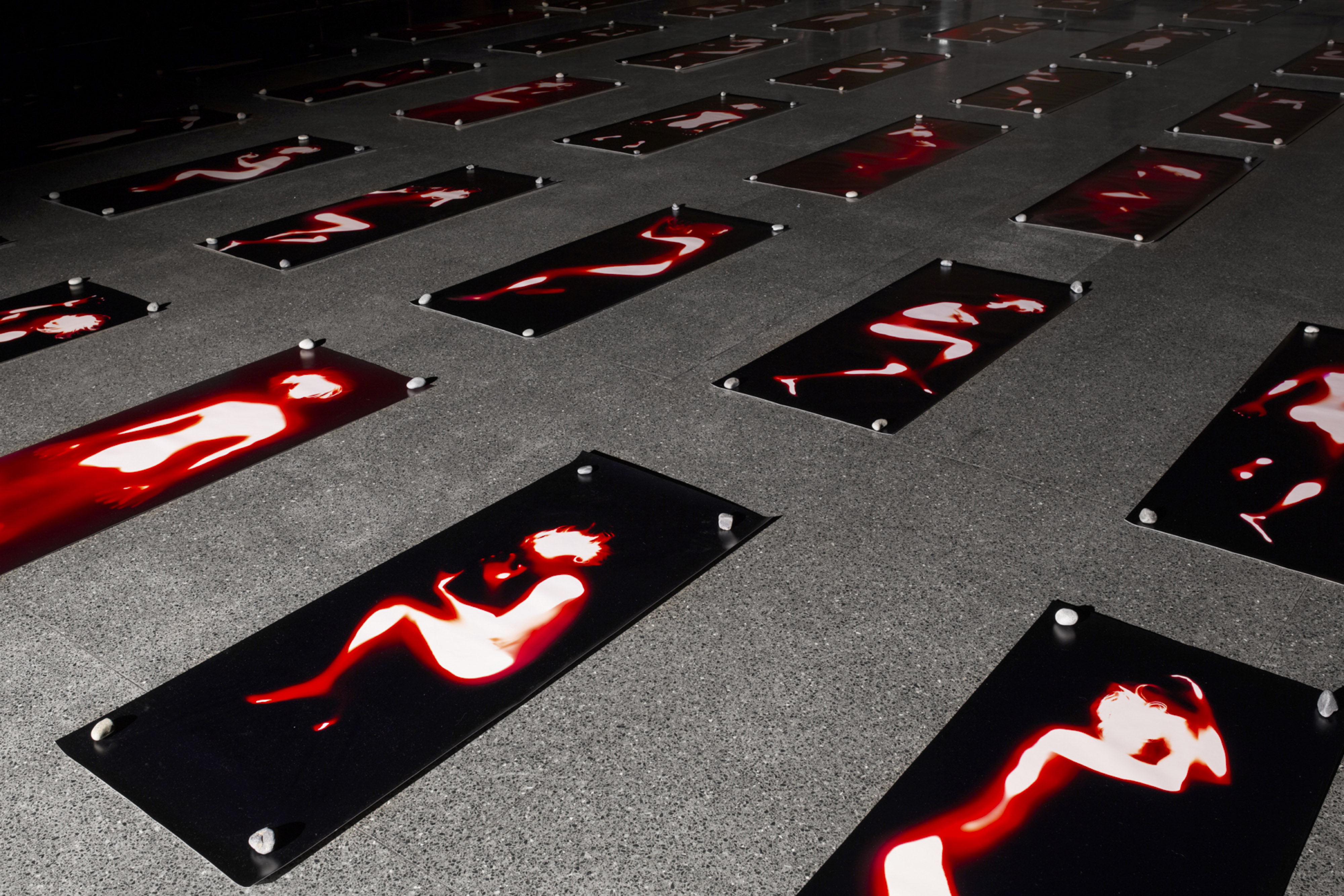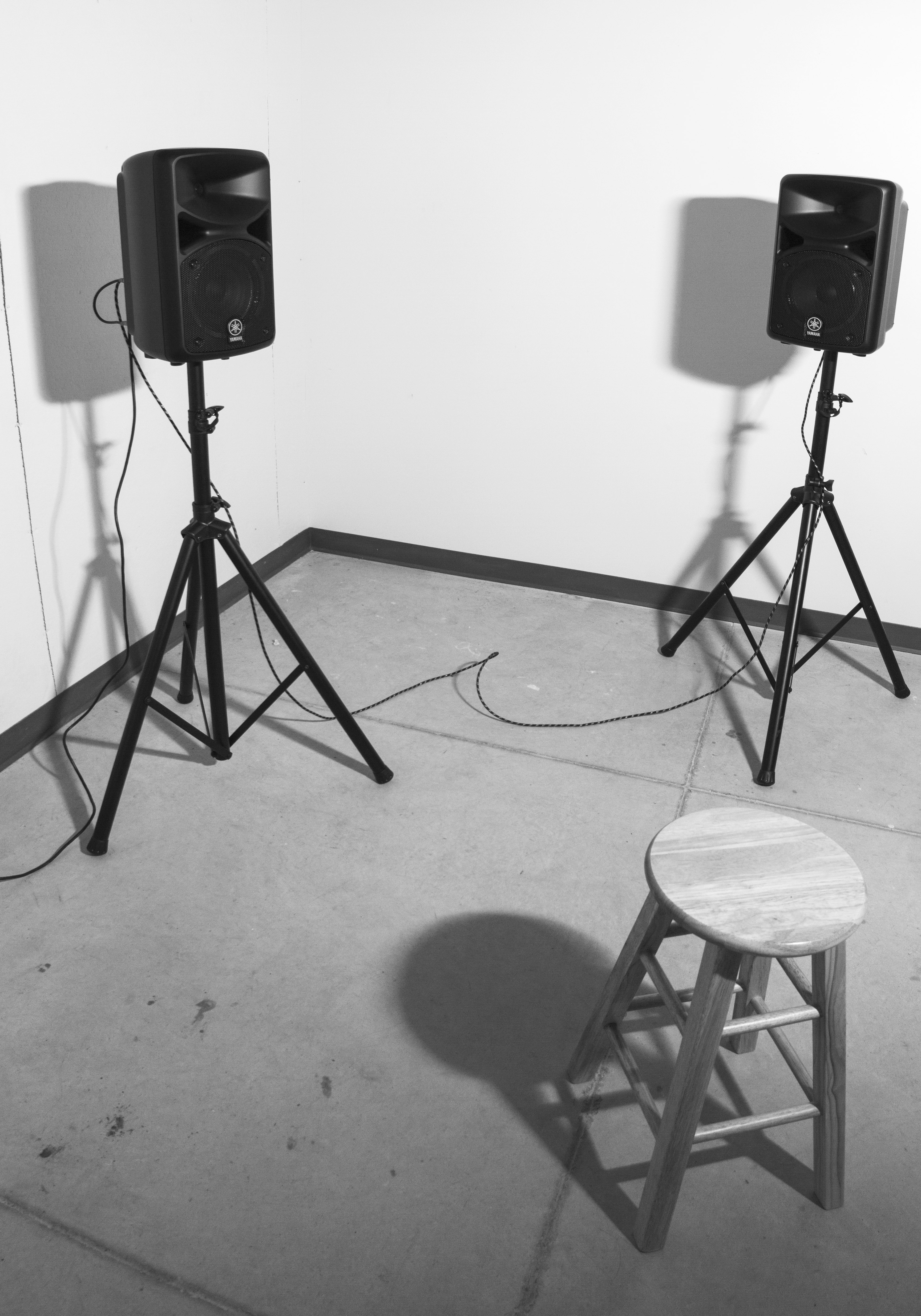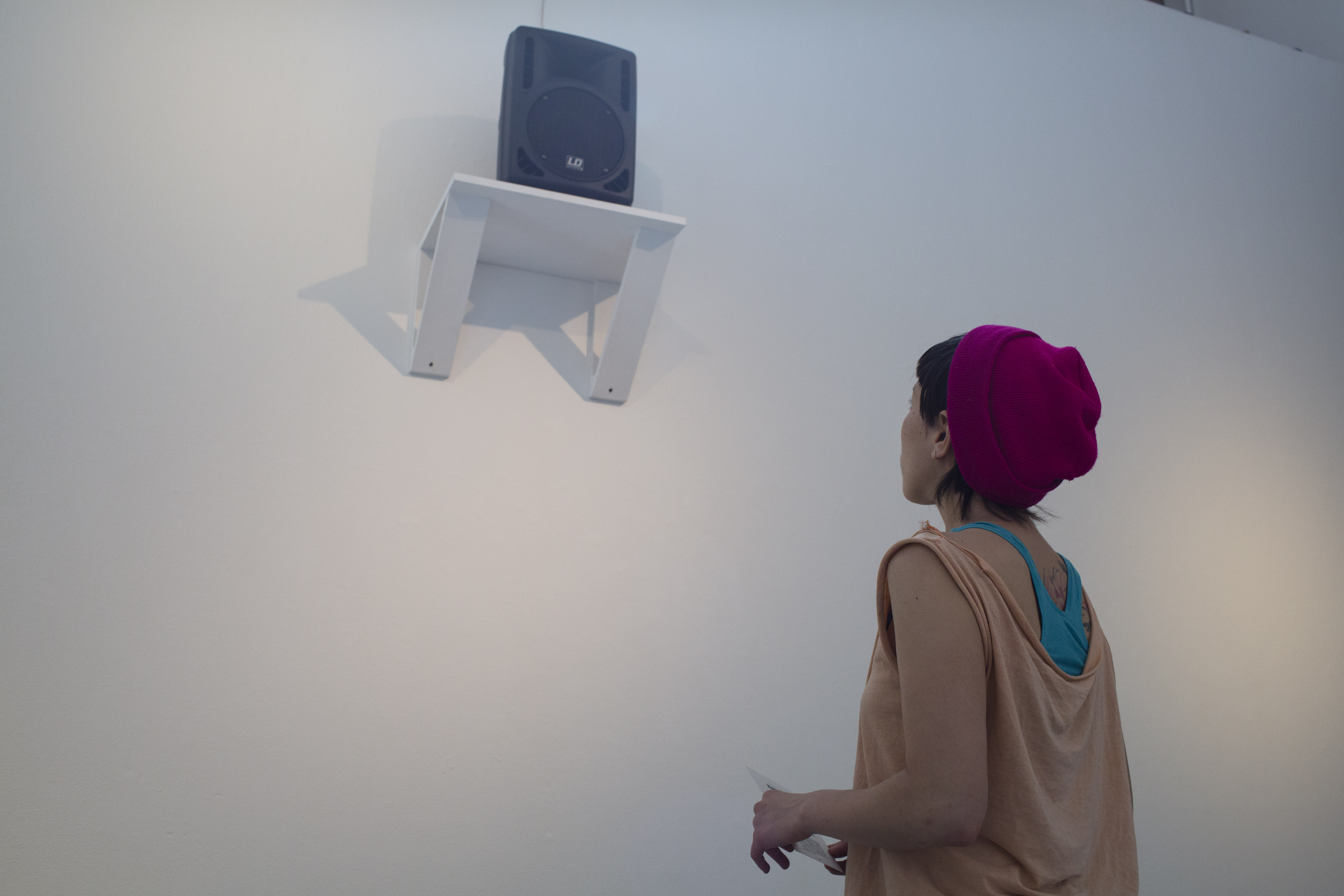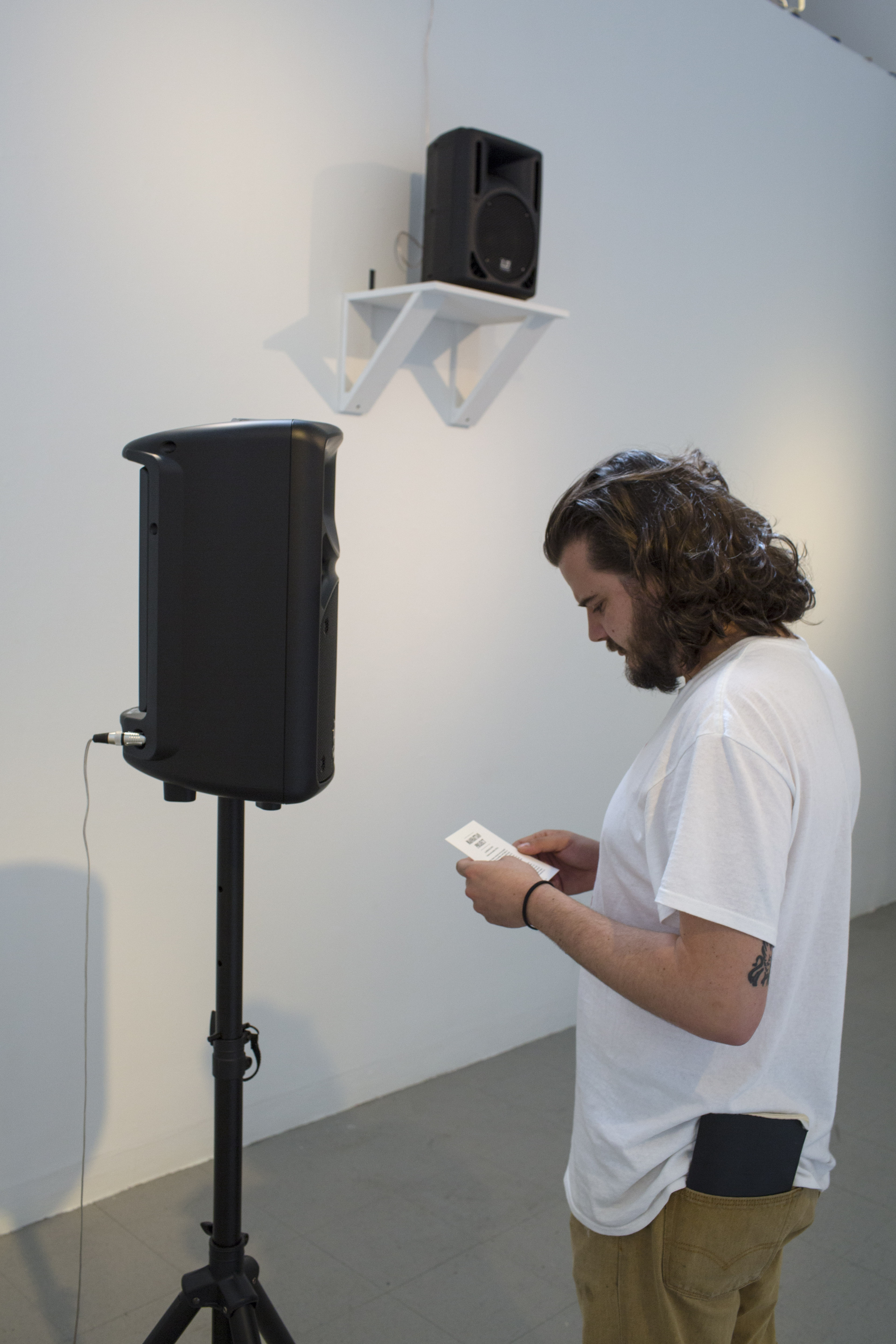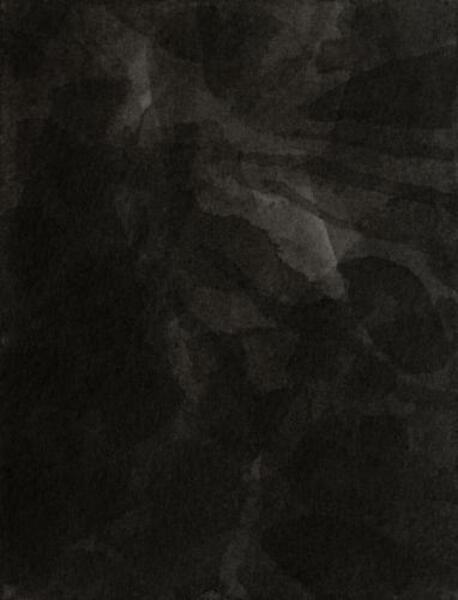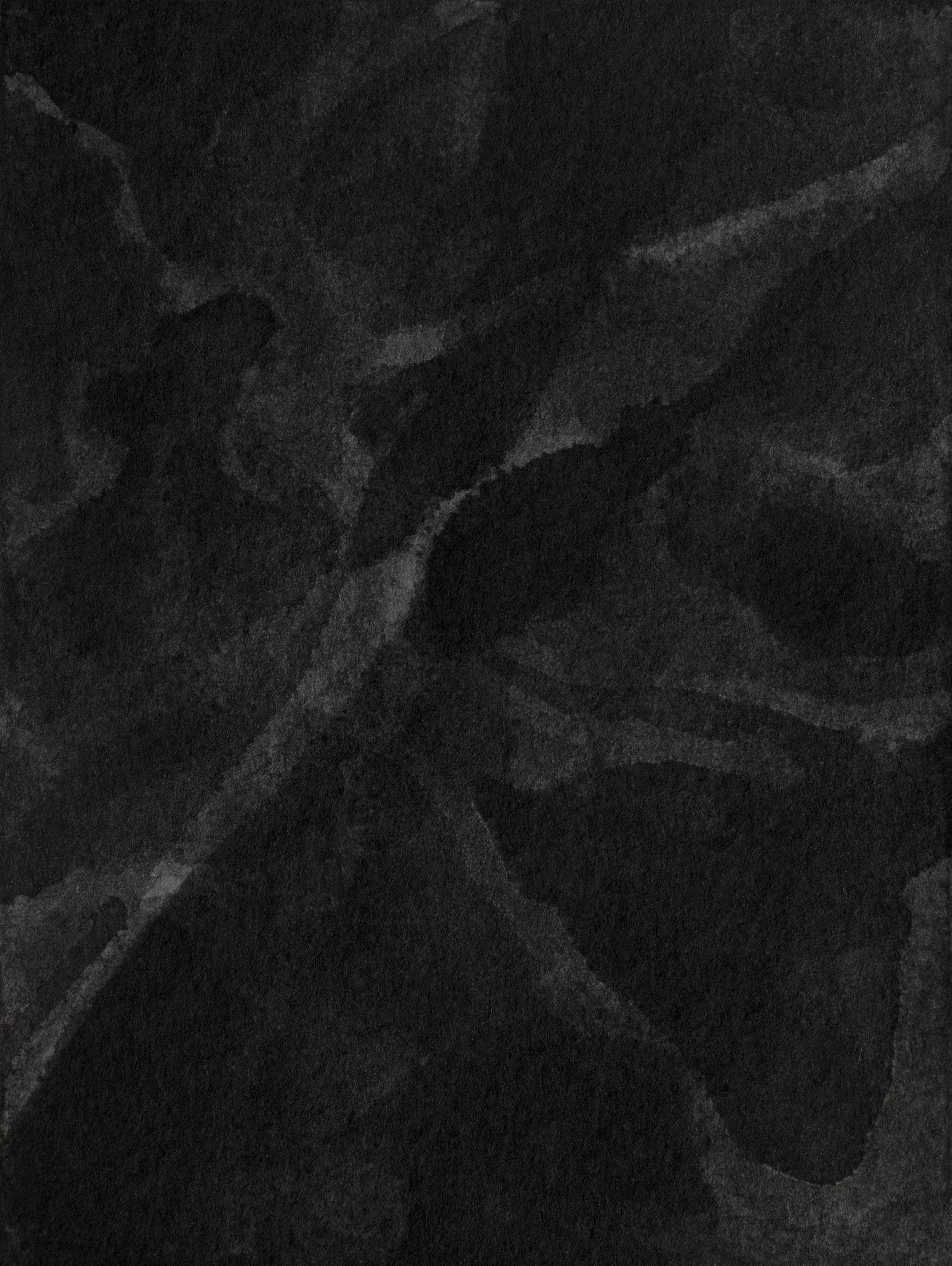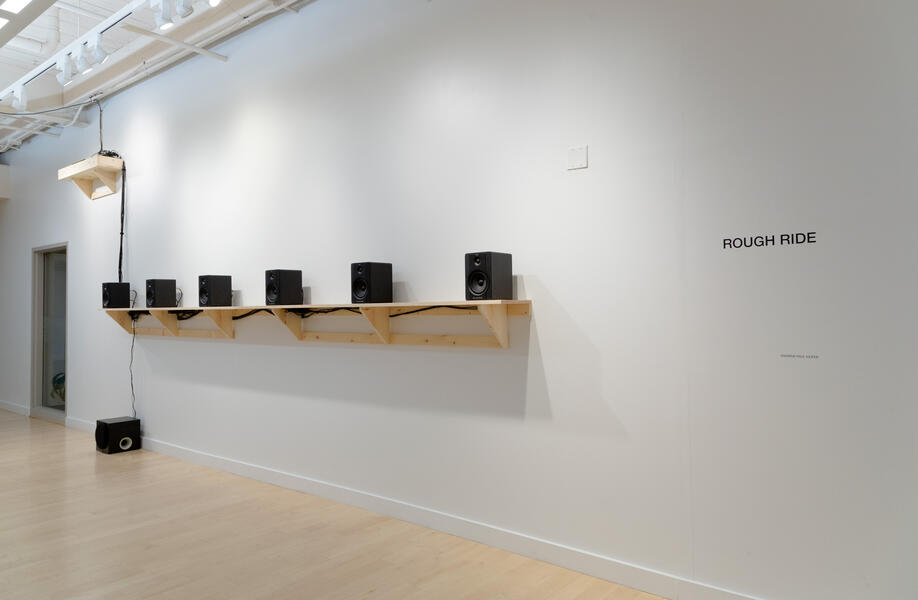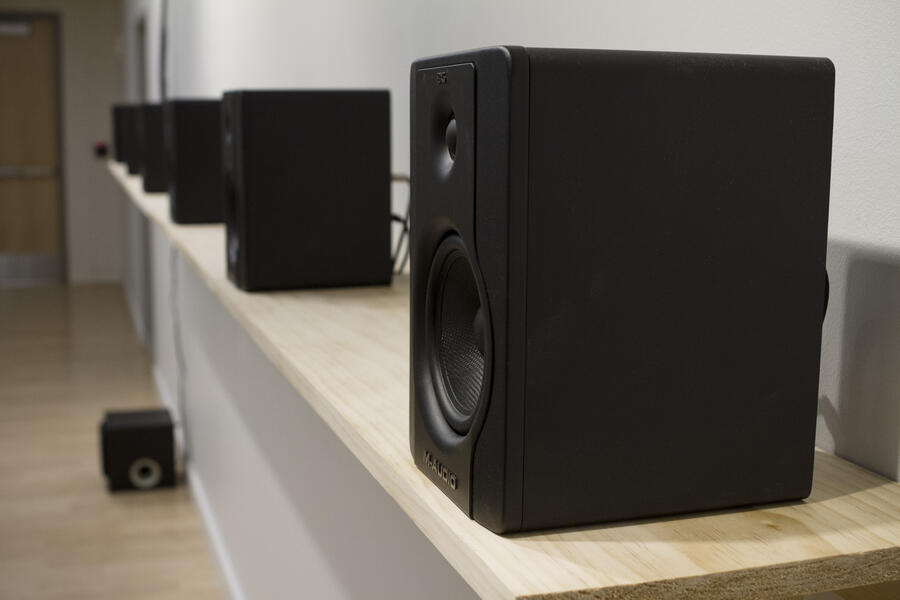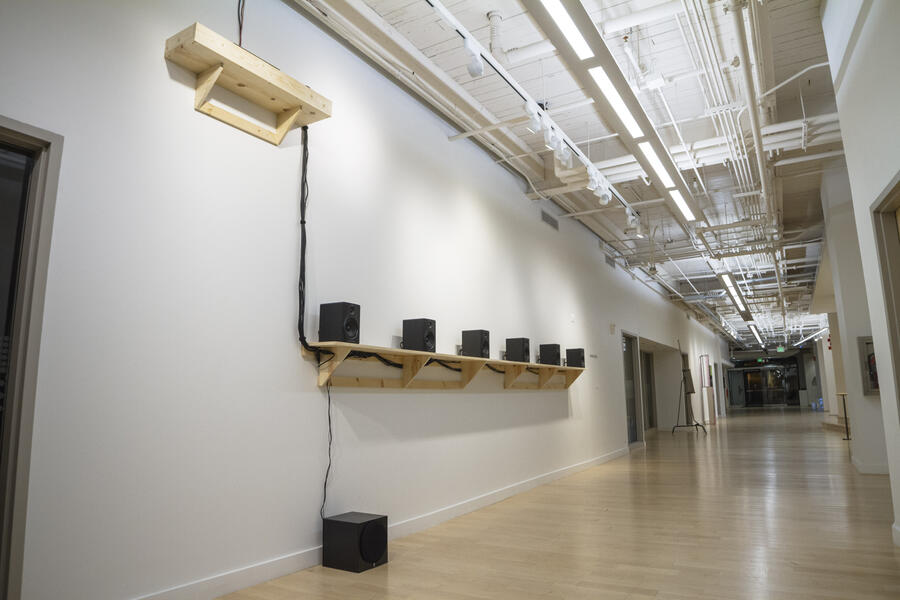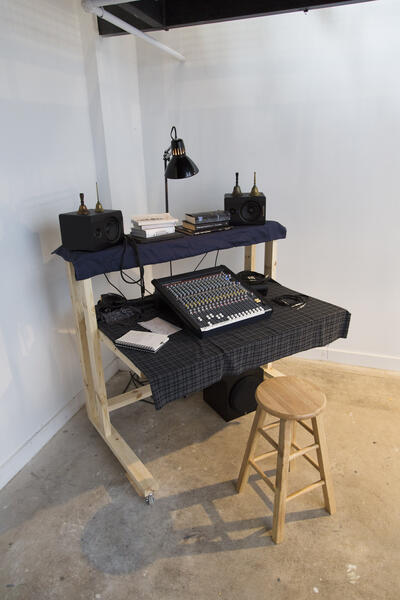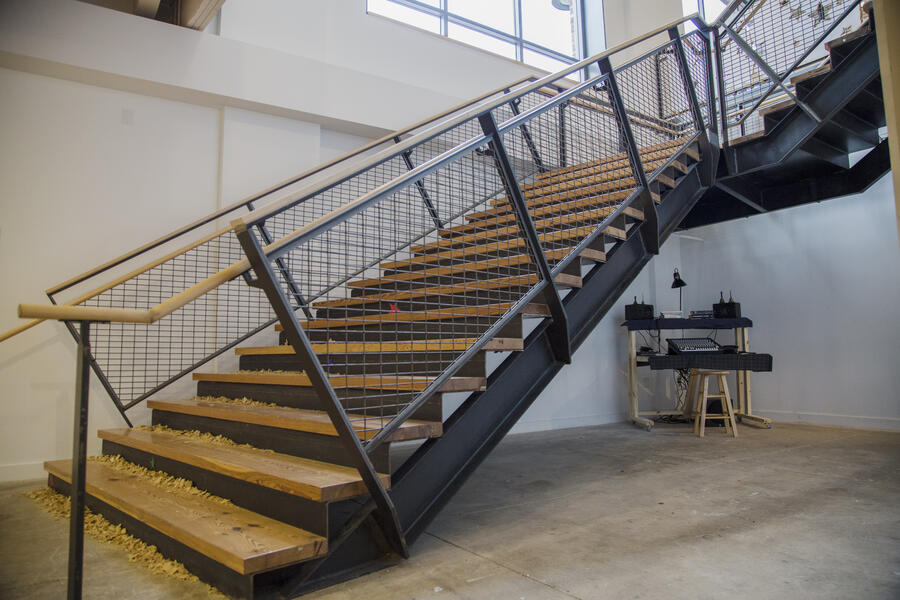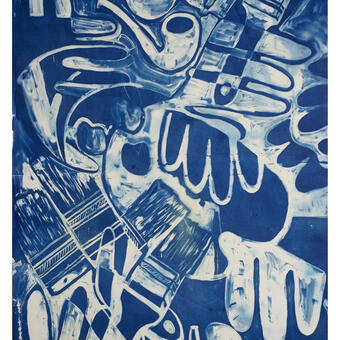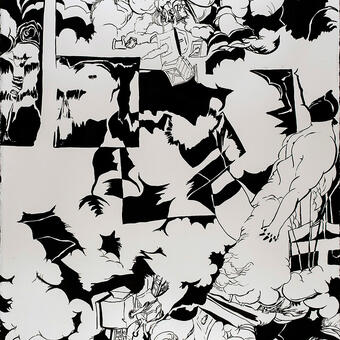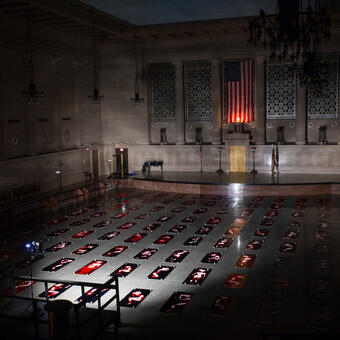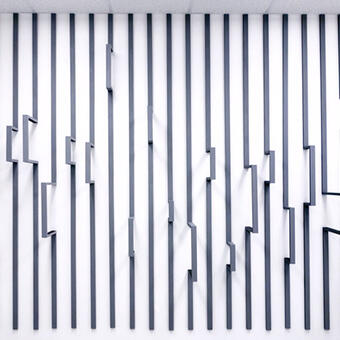Work samples
-
Afterimage Requiem video documentation with audio excerptVideo documentation of Afterimage Requiem at the Baltimore War Memorial in January, 2018, with an excerpt of the 4-channel sound component. Total duration of full length audio is 32 minutes, 31 seconds.
About Andrew
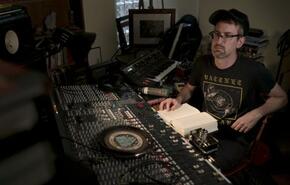
Andrew Paul Keiper is a sound artist based in Baltimore, Maryland, where he is faculty in the Animation and Film programs at the Maryland Institute College of Art.
His recent work addresses themes including the legacy of nuclear weaponry, race and white supremacy in Baltimore, and the frontier between sound art and experimental music. Andrew’s art has spanned the gamut from painting and woodworking to video and performance, but currently he primarily… more
Afterimage Requiem
The installation includes 108 human-scale photograms made using sunlight, light sensitive paper and Ito’s body evoking those lost in the bombing, and a 4-channel sound work that portrays the places and processes of the bomb’s production, and includes field recordings made at atomic heritage sites in New Mexico and Chicago.
Ito’s grandfather witnessed the explosion of the atomic bombing of Hiroshima that killed his family, while Keiper’s grandfather was an engineer who contributed to the effort to develop the bomb. Their collaboration grapples with this history while asserting its pertinence to a contemporary audience living in an increasingly unstable political landscape. Ito and Keiper seek mutual understanding while contemplating the roots, sorrow and scope of the bombing. In an era of overt nuclear crisis unlike any seen in decades, Afterimage Requiem asks the audience to reflect on the ramifications of our current course, and to learn from the past.
The sound component of the work is 32 minutes, 31 seconds in duration. As installed at the War Memorial, two of the four loudspeakers play out natural sounds recorded in the deserts and mountains of New Mexico. This is set against the more narrative sounds of the other two loudspeakers, which tell the story of the coming of war, the establishment of the Los Alamos laboratory, some of the many processes used in creating and refining the fissile materials, and the rainy night before the Trinity Test. It concludes with an evocation of the notion that these remarkable events and processes, rather than bringing an ending, were part of a unsettling new normal. Listeners in the space of the installation have the ability to traverse the space at will, experiencing their own ever-shifting mix of the sonic elements as they move about.
In 2016, Ito and Keiper received the Rubys Artist Project Grant through the Greater Baltimore Cultural Alliance to create Afterimage Requiem. The Rubys were conceived and initiated with start-up funding from the Robert W. Deutsch Foundation and are a program of the Greater Baltimore Cultural Alliance. Further support for this project came from Full Circle Fine Art Services.
-
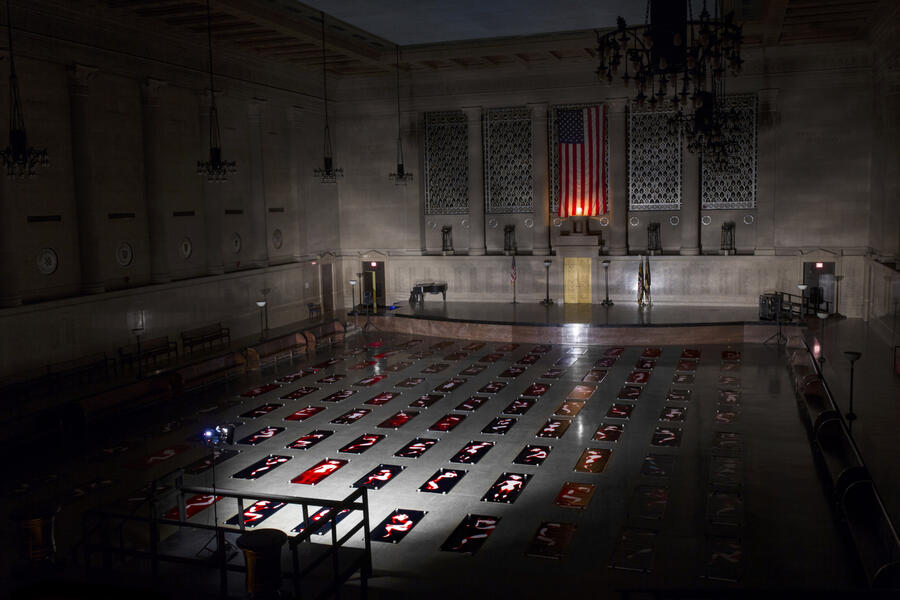 Afterimage Requiem installation viewAfterimage Requiem installation view at the Baltimore War Memorial, January, 2018.
Afterimage Requiem installation viewAfterimage Requiem installation view at the Baltimore War Memorial, January, 2018. -
Afterimage Requiem video documentation with audio excerptVideo documentation of Afterimage Requiem at the Baltimore War Memorial in January, 2018, with an excerpt of the 4-channel sound component. Total duration of full length audio is 32 minutes, 31 seconds.
-
Afterimage Requiem excerpt 1An excerpt from the 4-channel audio component of Afterimage Requiem. This excerpt includes narration drawn from the "Los Alamos Primer", a document based on lectures given to bring new Manhattan Project physicists up to speed on the theoretical foundations of the project. The end of the excerpt imagines the process of beginning to build the Los Alamos, New Mexico laboratory facilities. Total duration of full length audio is 32 minutes, 31 seconds.
-
Afterimage Requiem excerpt 2This excerpt from the 4-channel Afterimage Requiem sound component features the end of a sequence portraying the process of Uranium enrichment via an apparatus called the Calutron. It transitions into the penultimate sequence of the work, a nighttime scene with rainfall upon the desert as the early hour of the Trinity Test approaches. A player piano ploddingly plays “Don’t Fence Me In” (popularized by Roy Rogers in 1944) here ironically evoking the utter secrecy of the Manhattan Project which was soon to end with the bombing of Hiroshima and Nagasaki. Total duration of full length audio is 32 minutes, 31 seconds.
-
 Afterimage Requiem installation viewAfterimage Requiem installation view at the Baltimore War Memorial, January, 2018.
Afterimage Requiem installation viewAfterimage Requiem installation view at the Baltimore War Memorial, January, 2018. -
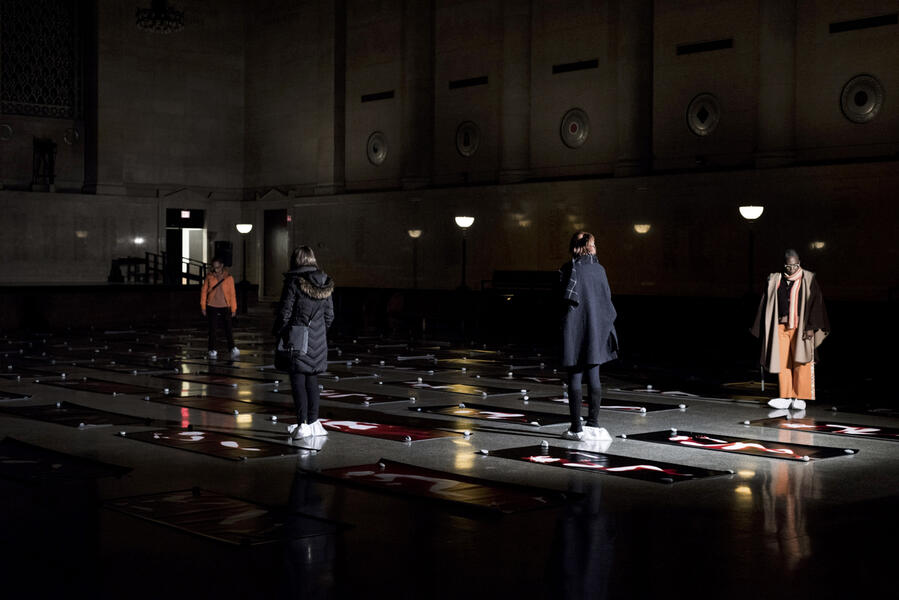 Afterimage Requiem installation view from openingAfterimage Requiem installation view, during opening reception at the Baltimore War Memorial, January, 2018.
Afterimage Requiem installation view from openingAfterimage Requiem installation view, during opening reception at the Baltimore War Memorial, January, 2018. -
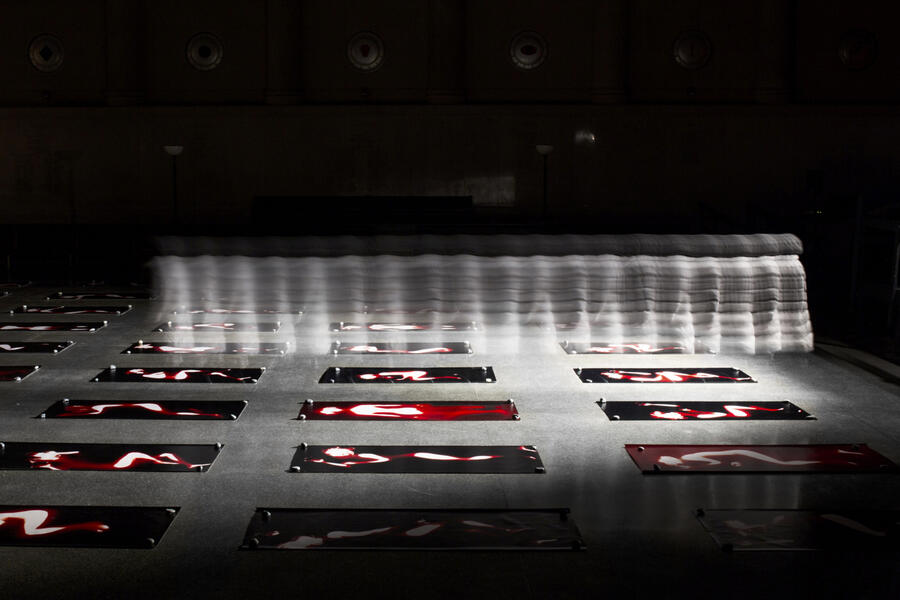 Afterimage Requiem installation viewAfterimage Requiem installation view at the Baltimore War Memorial, January, 2018. Photo credit: Kei Ito.
Afterimage Requiem installation viewAfterimage Requiem installation view at the Baltimore War Memorial, January, 2018. Photo credit: Kei Ito. -
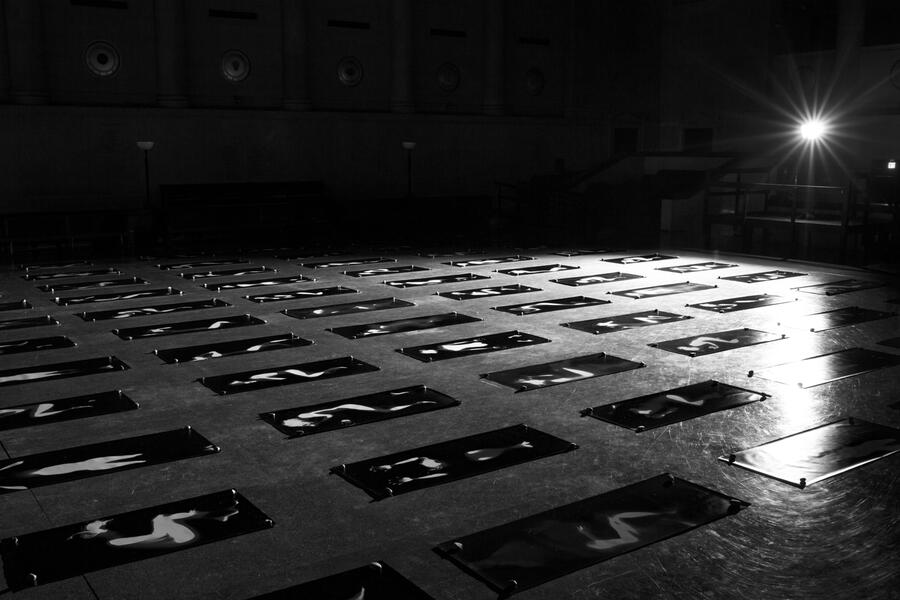 Afterimage Requiem installation viewAfterimage Requiem installation view at the Baltimore War Memorial, January, 2018.
Afterimage Requiem installation viewAfterimage Requiem installation view at the Baltimore War Memorial, January, 2018. -
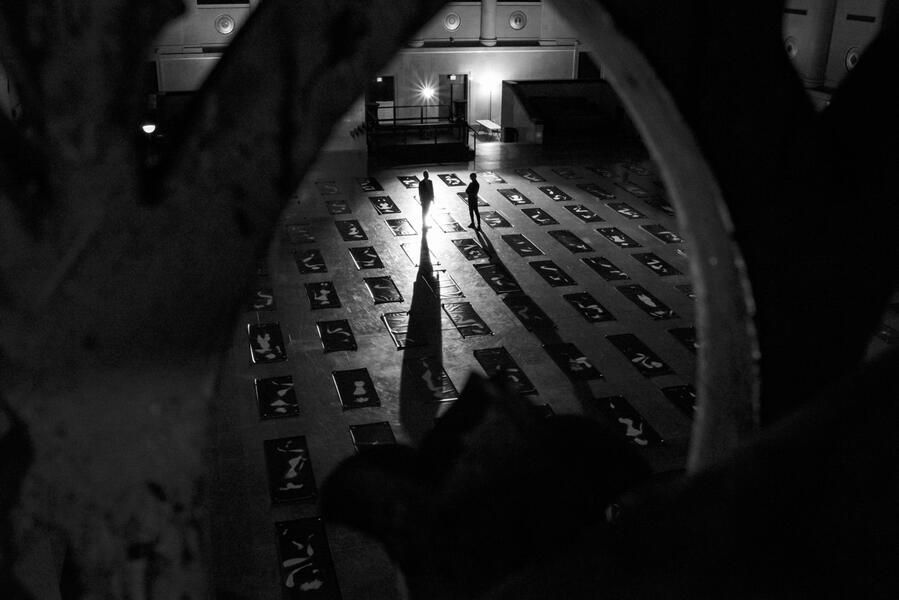 Afterimage Requiem installation viewAfterimage Requiem installation view at the Baltimore War Memorial, January, 2018.
Afterimage Requiem installation viewAfterimage Requiem installation view at the Baltimore War Memorial, January, 2018. -
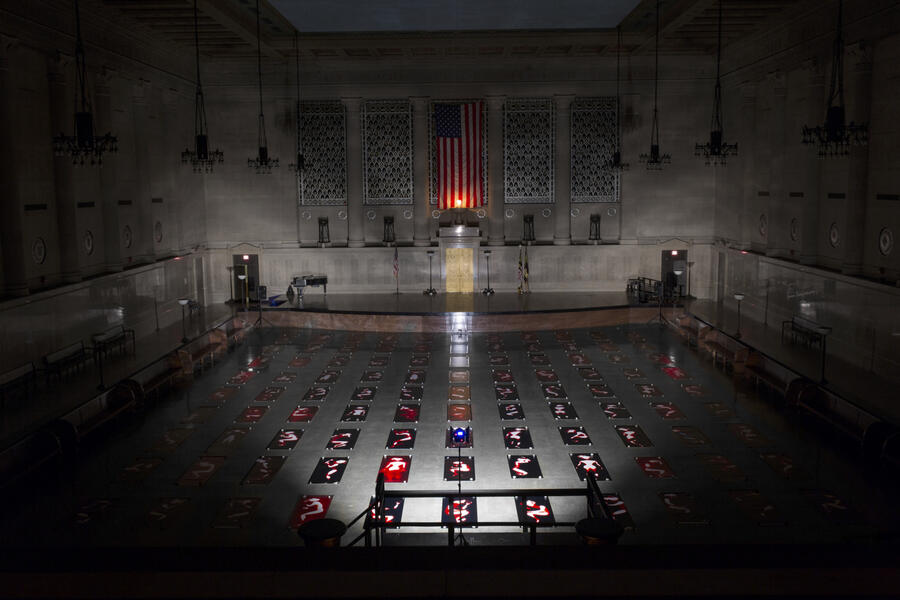 Afterimage Requiem installation viewAfterimage Requiem installation view at the Baltimore War Memorial, January, 2018.
Afterimage Requiem installation viewAfterimage Requiem installation view at the Baltimore War Memorial, January, 2018.
Ash Lexicon-Silverplate
This work is a collaborative installation by Andrew Paul Keiper and Kei Ito. Ito's grandfather was in Hiroshima at the time of the atomic bomb attack, and went on to become an anti-nuclear activist. Keiper's grandfather was an engineer who contributed to the Manhattan Project. This work, Ash Lexicon-Silverplate was installed in the 2016 Young Blood exhibition at Maryland Art Place, in Baltimore, MD. The film canisters, 108 in number, are filled with ash from a burnt Japanese dictionary, identical to the one owned by Ito's grandfather, which was burned in the nuclear attack on Hiroshima. The audio considers the Silverplate series of B-29 bombers used in the attacks on Hiroshima and Nagasaki, including the Enola Gay and Bockscar, and imagines the lost recording made of the Hiroshima bombing run made on a reel-to-reel wire recorder.
Andrew and Kei's work together seeks to find mutual understanding and reconciliation through examining our shared history. We hope to evoke a sense of loss and mourning, even while asserting that we have the power to forge a world without the looming nightmare of nuclear war.
Kei Ito's Baker Portfolio can be found here.
-
Ash Lexicon-Silverplate
-
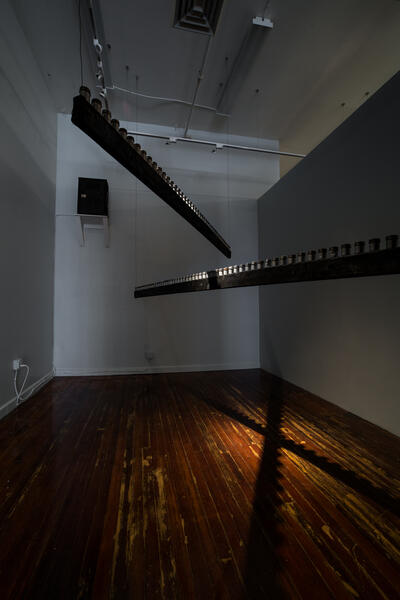 Ash Lexicon-Silverplate (installation view)
Ash Lexicon-Silverplate (installation view) -
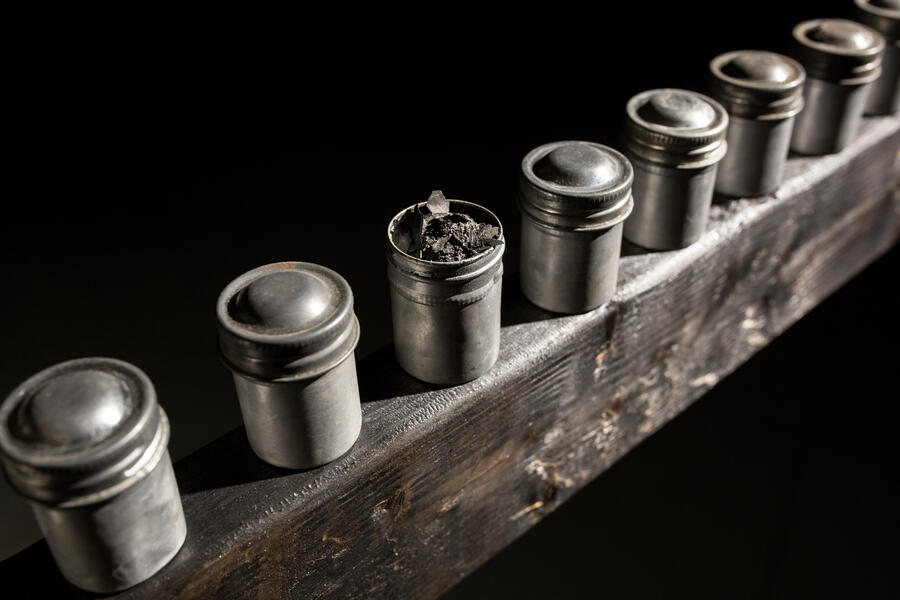 Ash Lexicon-Silverplate (installation view)
Ash Lexicon-Silverplate (installation view) -
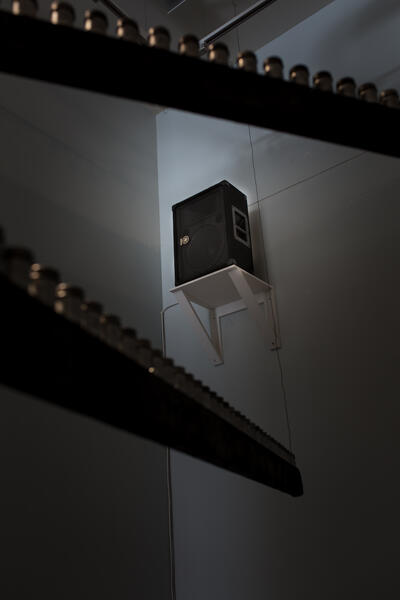 Ash Lexicon-Silverplate (installation view)Ash Lexicon-Silverplate (installation view), as installed at Maryland Art Place for the Young Blood 2016 exhibition.
Ash Lexicon-Silverplate (installation view)Ash Lexicon-Silverplate (installation view), as installed at Maryland Art Place for the Young Blood 2016 exhibition. -
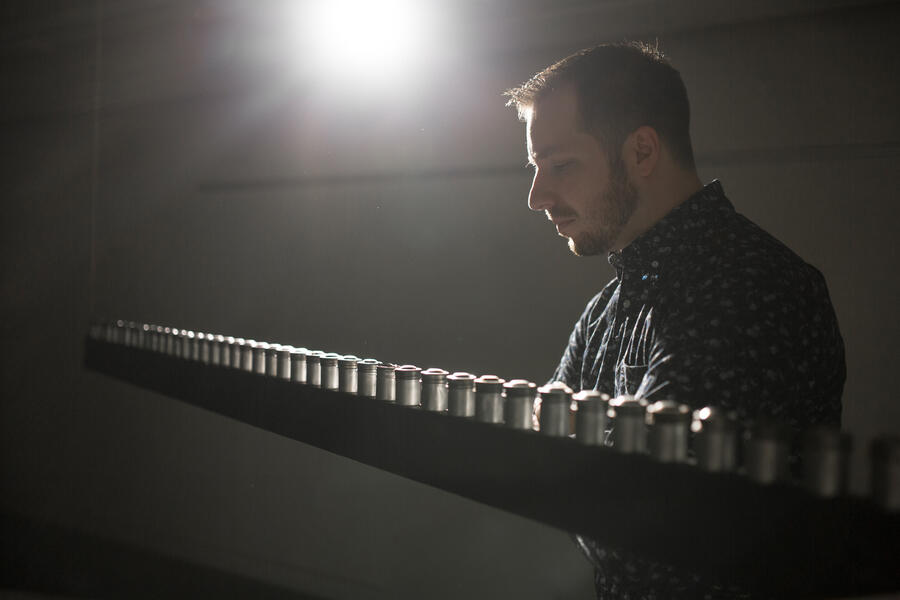 Ash Lexicon-Silverplate (installation view)
Ash Lexicon-Silverplate (installation view) -
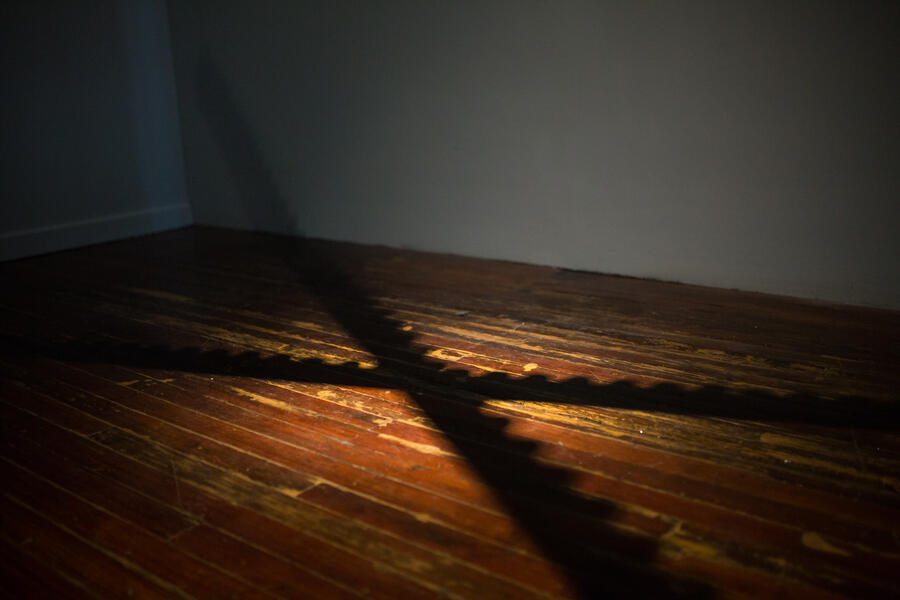 Ash Lexicon-Silverplate (installation view)
Ash Lexicon-Silverplate (installation view)
Bunker Music
Bunker Music is suite of songs that envision the ordeal of people confined to a fallout shelter during and after a nuclear war, and imagines their fear, helplessness, mourning and dreams. The suite is comprised of songs that use drones, looping, noise and sound design to evoke the emotional terrain of the bunker. An ongoing project, the first five songs in the suite are entitled Closing out the light, First night, Lassitude, Minute Man and Water Dream.
Bunker Music made its public debut in November, 2018 as the score for Kei Ito’s project Luminescent Shadows at the InLight Richmond festival presented by 1708 Gallery at the Virginia Museum of Fine Arts.
-
Closing out the light"Closing out the light" is the first track of the Bunker Music suite.
-
First night"First Night" is the second track of the Bunker Music suite.
-
Lassitude"Lassitude" is the third track of the Bunker Music suite.
-
Minute Man"Minute Man" is the fourth track of the Bunker Music suite.
-
Water dream"Water dream" is the fifth song of the Bunker Music suite.
Niels Bohr 4
This work was exhibited as part of the 2016 Sondheim Artscape Semi-finalist Exhibition.
Manhattan Project
Manhattan Project seeks to evoke the creation of the atomic bomb from the perspective of an engineer, enmeshed in the defining political conflicts of the era. The droning of calutrons used to enrich uranium and the 44.4 second long free fall of the bomb find their place alongside propaganda, crooner Perry Como, and the "Internationale" in the soundscape of the piece.
-
Manhattan ProjectThis 5-channel sound-based work was prompted by the life of my grandfather, Lovell Cardenas. An engineer, Lovell helped to develop the first nuclear weaponry during World War II as an employee of the Manhattan Project. He was secretive about his work, as he was about much else in his life – Lovell was a communist working within the military industrial complex, and maintained romantic liaisons outside his marriage. Manhattan Project seeks to evoke the creation of the atomic bomb from the perspective of an engineer, enmeshed in the defining political conflicts of his era. The droning of calutrons used to enrich uranium and the 44.4 second long free fall of the bomb find their place alongside propaganda, crooner Perry Como, and the Internationale in the soundscape of the piece.
-
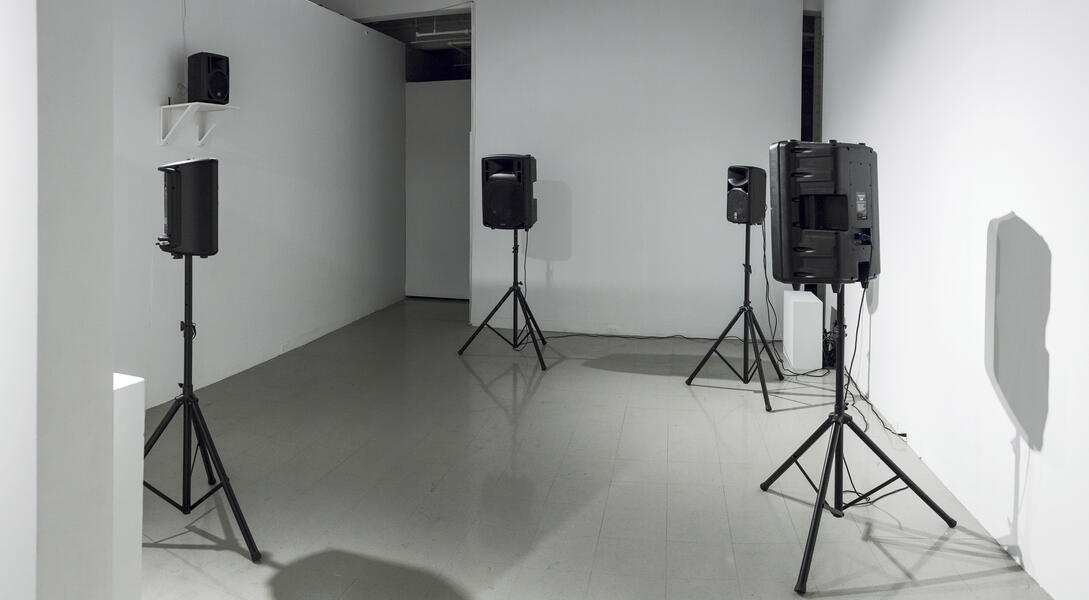 Manhattan Project (installation view)
Manhattan Project (installation view) -
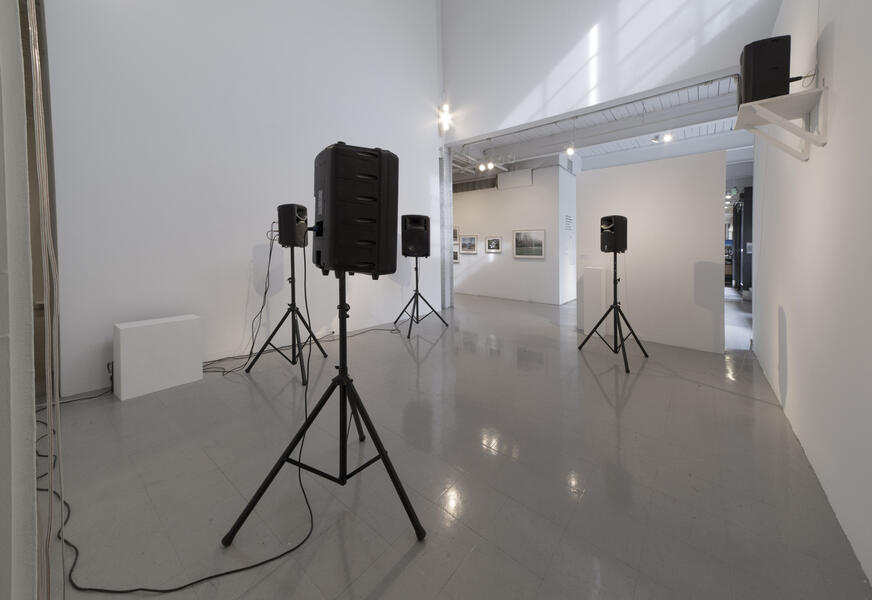 Manhattan Project (installation view)Manhattan Project (installation view), as installed in MICA's Meyerhoff Gallery in 2016.
Manhattan Project (installation view)Manhattan Project (installation view), as installed in MICA's Meyerhoff Gallery in 2016. -
 Manhattan Project takeaway cards
Manhattan Project takeaway cards -
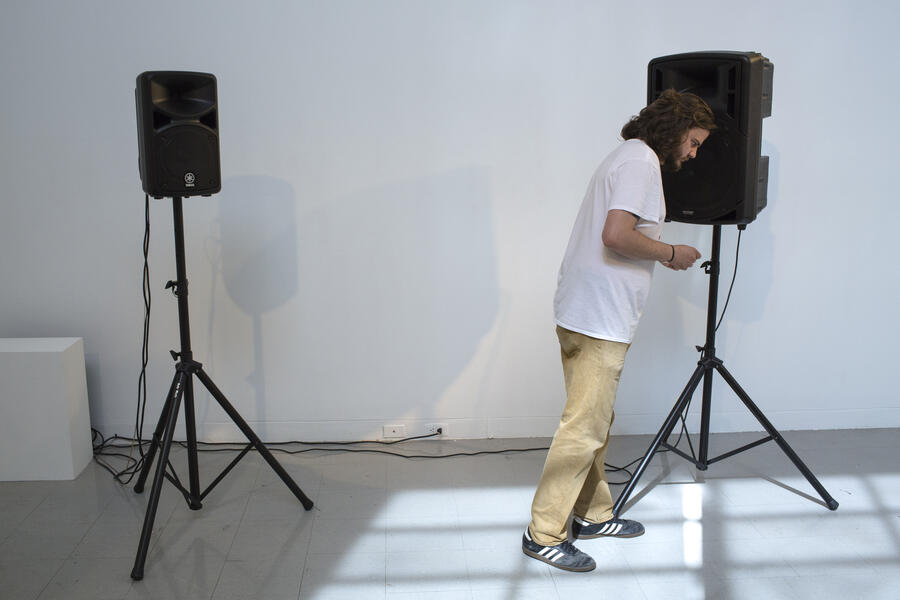 Manhattan Project (installation view)
Manhattan Project (installation view) -
 Manhattan Project (installation view)
Manhattan Project (installation view) -
 Manhattan Project (installation view)
Manhattan Project (installation view)
REDACTIONS
The ink works might be read as redactions, as one might find in a partially declassified document. At the same time, they can be read as depicting the processes of effects of nuclear weaponry. The two readings operate together as an uneasy palimpsest.
The audio recordings imagine an archive of SIGINT (signals intelligence) or surveillance recordings, presented without clarifying commentary. Hiss, hum and signal drop-out present the listener with additional obscurity to the already mysterious recordings.
Summer Sonar
Artworks on display invite viewers to consider the promise of both real and imagined aspects of civic participation as they navigate their way through physical structures and spiritual spaces of the pool’s remains. Pool No.2 was a local flashpoint for the discourse on race that was happening nationally in American society during the mid-1950s and is a physical reminder that the failures and struggles of our efforts at civic repair are just as important as the successes.
Summer Sonar consisted of the sound of running water, played out from two cone-style PA speakers temporarily installed under the eaves of the historic changing room building. Periodically, another sound rises up, that of the voices of children, as if heard from under the water. The work imagines the tragic death of the young African American boy whose drowning in the Patapsco River prompted the desegregation of the city pools, and the filling in of Pool No. 2. The sound is calming and joyous, but fraught by history, just as the site itself.
-
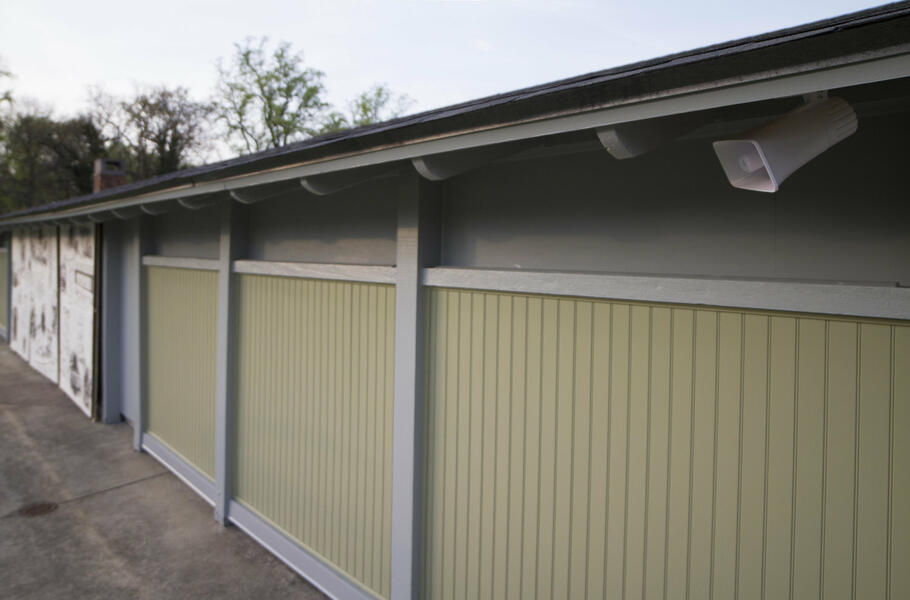 Summer Sonar loudspeakerThis installation photograph shows how the loudspeakers for Summer Sonar were hung under the eaves of the changing room building at Druid Hill Park Pool No. 2.
Summer Sonar loudspeakerThis installation photograph shows how the loudspeakers for Summer Sonar were hung under the eaves of the changing room building at Druid Hill Park Pool No. 2. -
Summer Sonar sound excerptThis is an excerpt of the audio of Summer Sonar. As installed at Druid Hill Park Pool No. 2, the two loudspeakers played this audio so that it was just barely audible from a distance, and about the volume of a quiet conversation near the loudspeakers.
Rough Ride
This piece folds the narrative of events over itself, playing the sounds of protest, politicians' awkward, tone-deaf speeches, the breathless, pro-police biased coverage of the media, and push back against it from fed-up community members alongside audio portraying the rough ride itself, putting the listener in the position of Gray inside the van. The sounds of the Uprising rise in intensity along with the vehicular sounds of the ride towards an overwhelming, cataclysmic crescendo. These sounds play out from six speakers on a 16 foot long shelf, offering no opportunity to hear and comprehend the entire sequence of events from any given position. The listener must choose what they will hear, and what they will avoid hearing. Above, the sound of the Baltimore Police Foxtrot helicopters unceasingly play from three speakers hung from the celling, a constant reminder of the surveillance state, and the violence that flows from it.
Overture (Hollow Earth)
This piece was exhibited in the 2016 MICA Graduate 1st Year Juried Exhibition in installation form. The sound played out from studio speakers, in a tableaux that emphasizes the constructed nature of the piece, and puts the listener in the position of an audio engineer.



